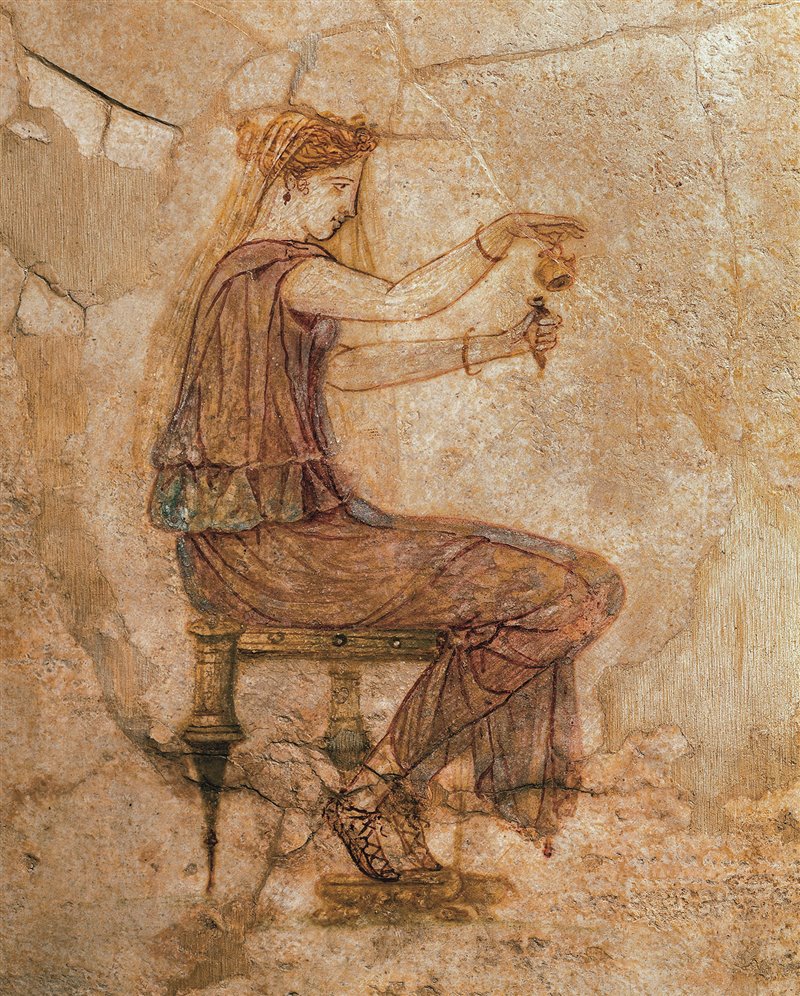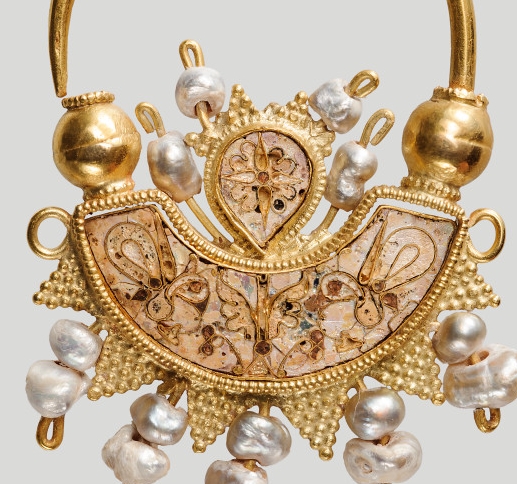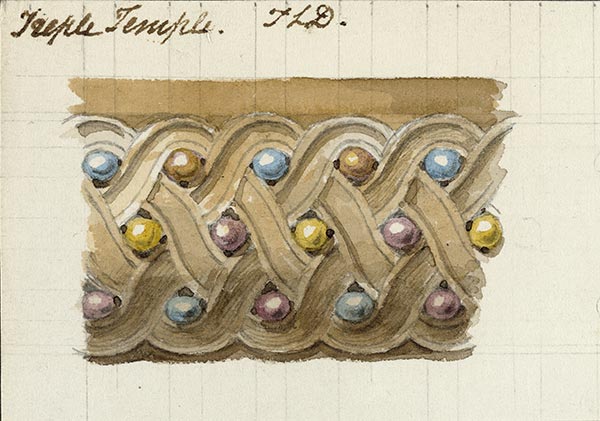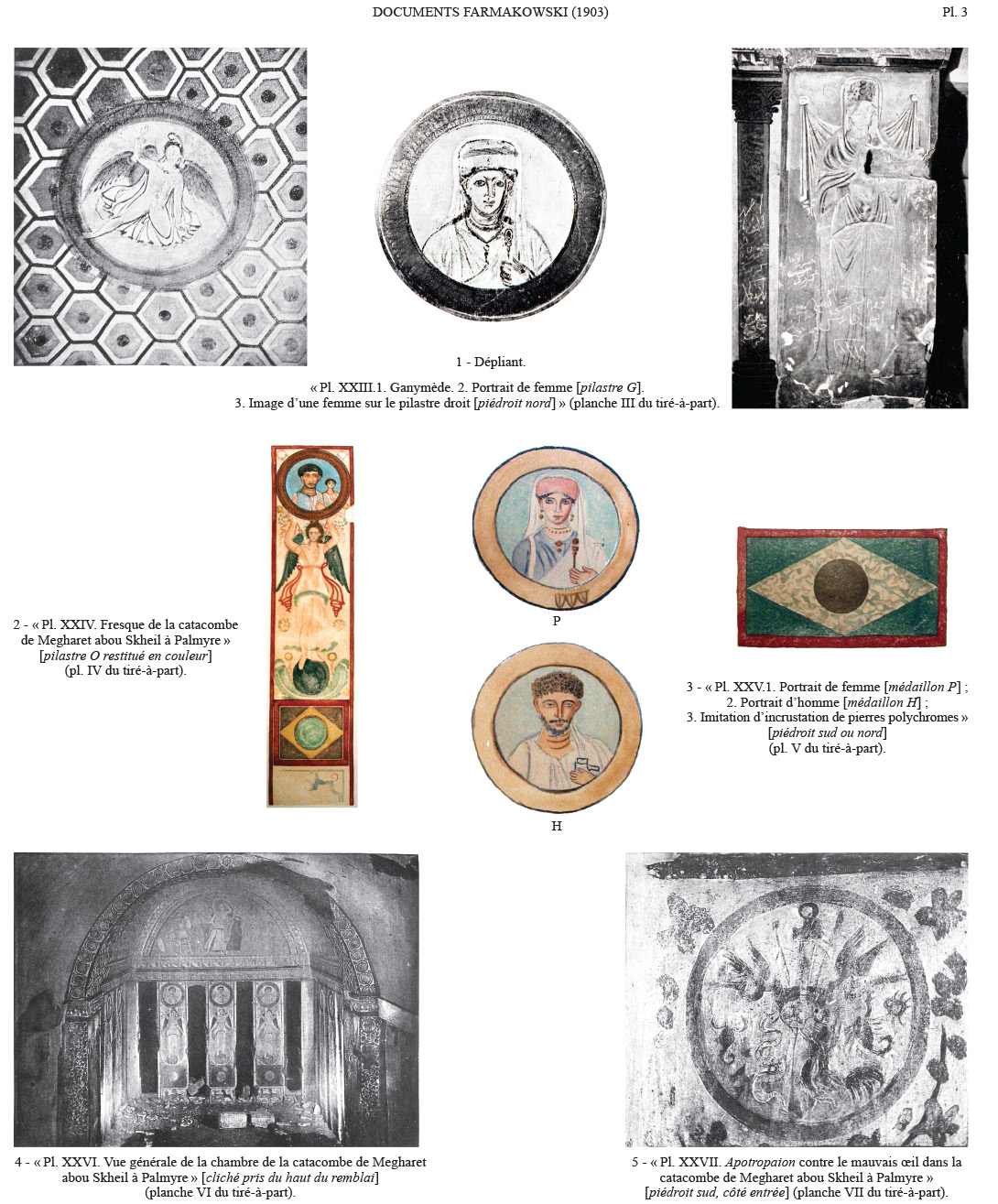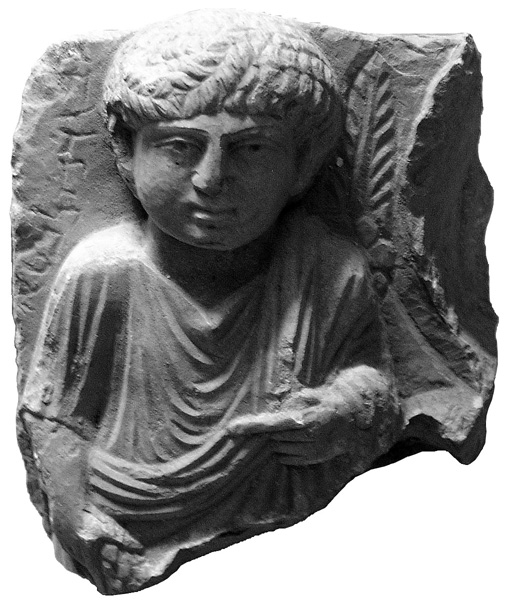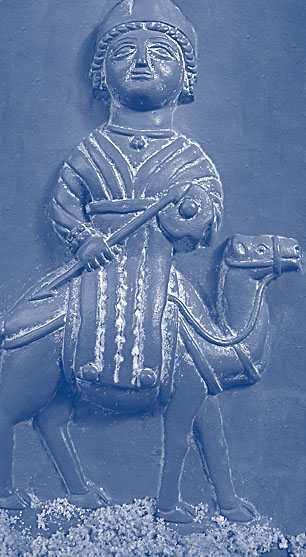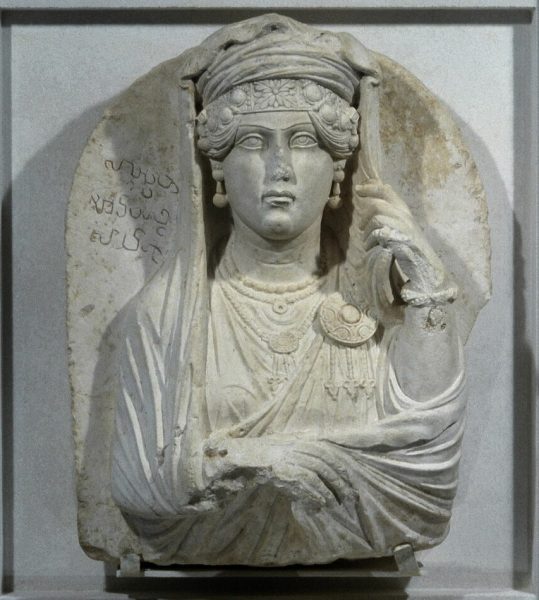“The ivory object, worked with the technique of engraving, comes from Cuma (Pozzuoli, Naples) and dates back to the Hellenistic-Roman period (third century – fifth century CE).”

Photo: Dea / Album
“The rectangular jewel box is supported by four small feet in the shape of mermaids. The decoration of the front side and one of the short sides consists of small plaquettes depicting standing figures of draped caryatids; the figures on the edge have their arms held along their sides. On the other short side of the box, there are plaquettes portraying winged cupids with their arms folded behind their backs. The plaquettes, as well as the small molded cylindrical pillars and the small frames which run along the edges and the lid, are made of ivory, while the box itself (today reconstructed) would have been entirely made of wood. A series of precious objects were found inside the jewel box including a bronze mirror, a gold ring, two silver fibulae covered with gold filigree leaves, a small pyx, a needle, a small spatula and a bone comb, a spindle and a large pin.” source


